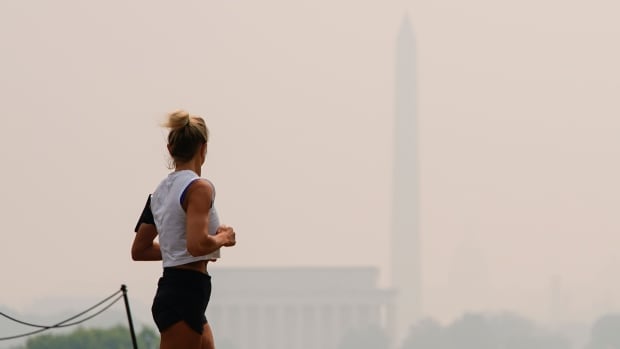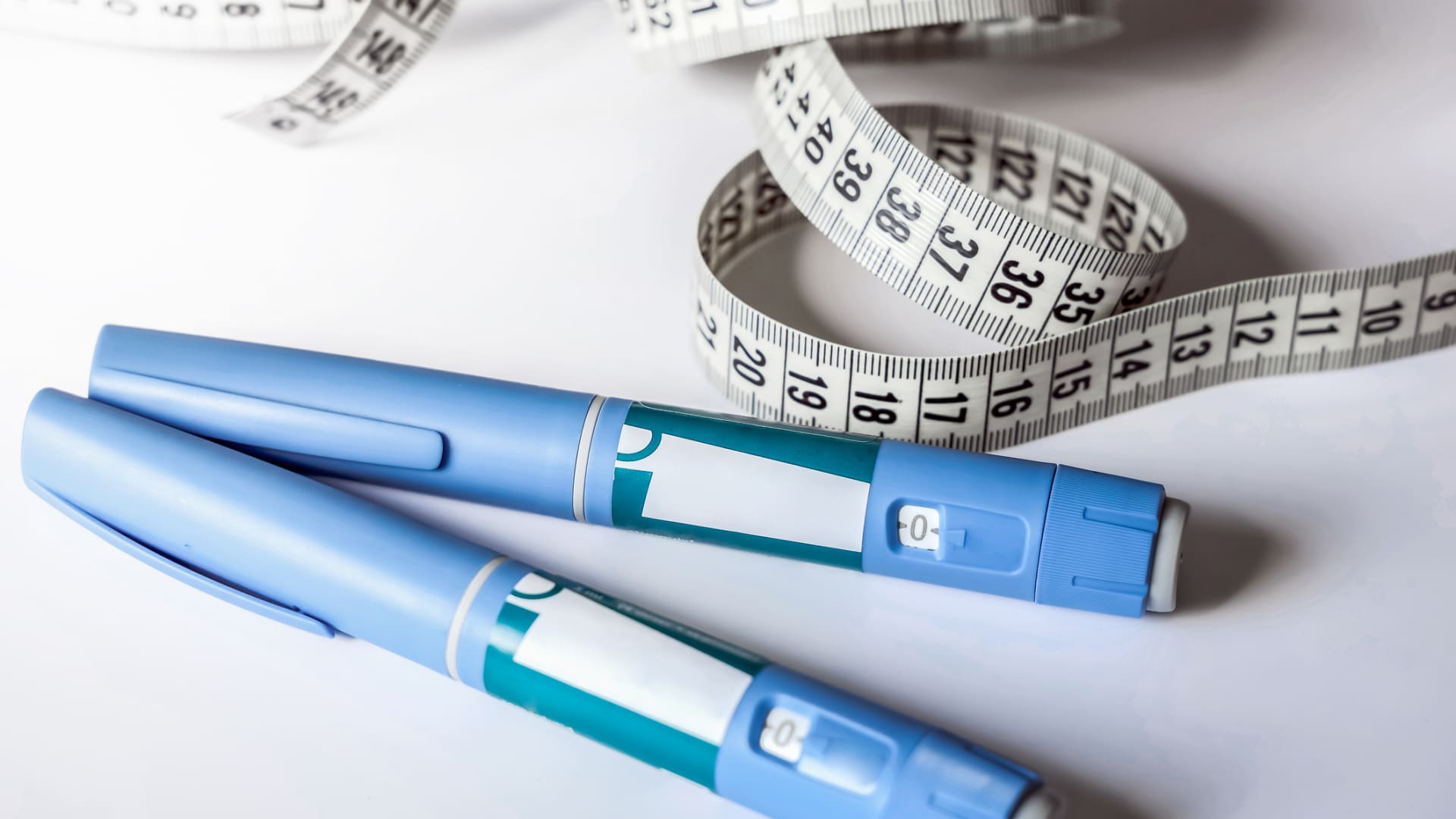Danielle O’Hanley, from Toronto, runs early in the morning to avoid the heat.
“I saw it was going to be 30 or 35 degrees after work, so I was up early and out running by 7 a.m. so that I could have a bit of a cooler temperature,” she told CBC News last week.
She’s used to adapting her schedule for icy conditions in the winter, and running in the rain, but last summer brought a new challenge: wildfire smoke. Cities across Canada were blanketed with thick smoke due to record-breaking fires, fuelled by drought and record high temperatures. It was the most destructive wildfire season ever recorded, and scientists have attributed it to human-caused climate change.
“I think that was really a wake-up call for me,” she said. “[I’m] used to looking at the weather forecast in the winter … but smoke was a new element to have to contend with.”
When it’s smoky, O’Hanley runs on a treadmill instead. Extreme weather events, like flooding, have also caused the run group that she co-organizes to divert their route.
From weekend runners to Olympians, extreme weather is changing when, where and even whether people run, as heat, wildfire smoke and smog make certain types of outdoor exercise dangerous.
Run clubs adjust
Run clubs and running-based events are changing how they plan, but it didn’t always used to be like this.
“When I first entered this industry, it was almost unheard of to cancel an event,” said Kirsten Fleming, executive director of Run Calgary. “Now, it’s commonplace — every year, there are events getting cancelled for a variety of reasons that are all pertaining to different aspects of our climate.”
To monitor the weather more closely, they’ve even hired a meteorologist for daily briefings leading up to their events.

“Leading up to race week, we are looking at the forecast 10 days out, five days out, one day out,” she said. “It has really changed what we do for a living — we used to just plan and execute events and there was a fair degree of certainty [they] were going to take place.”
Putting on events from 30 C to -30 C, Run Calgary has had to adapt to a range of risks, including air quality advisories, extreme heat, thunderstorms and flooding.
Running at night
Midnight Runners is an international organization that co-ordinates nighttime runs. The Toronto chapter sees about 350 people gather to run every Tuesday at 7 p.m., when it is typically cooler.
But Ben Davies, who helps organize the runs, has noticed an uptick in nights with hot temperatures.
“I can’t really recall summers at 7 p.m. on a Tuesday night being sometimes 30 degrees, but now we’re really seeing those runs have that heat,” he said.
2023 was the hottest year on record, according to the European Union’s Copernicus Climate Change Service. CBC News climate specialist Darius Mahdavi breaks down what this means and why we’ll be seeing more severe climate impacts like wildfires, droughts and floods.
They’ve had to cancel runs because of air quality, but are making adjustments where they can and are in constant communication with their runners. Davies also said hydration is key, and that the group often encourages the use of sports drinks to replenish electrolytes lost from sweating, like sodium and potassium.
“If it’s extremely hot and you’re going for a run, just listen to your body,” he said. “Adjust pace, adjust expectations, run at cooler times, protect your skin, dress for sweat — [use] all the tools you can to make running a better experience.”
When to exercise
O’Hanley has pushed herself to run in snow storms, but is being more careful when it comes to things like smoke.
“That’s a new thing we need to take into account,” she said, “when the benefit you’re going to get from going out running is overpowered by the negative impact.”
Dr. Michael Brauer, a professor in the University of British Columbia’s School of Population and Public Health, said that in most situations, it’s more beneficial than harmful to exercise — the exception being wildfire smoke.
A new report says heavy wildfire smoke made Canada’s 2023 air quality worse than the U.S. for the first time, and scientists warn it could happen again this year.
“It’s only when it’s very highly polluted that you’re doing yourself more harm than good,” he said. “Having said that, you don’t want to make things worse if you don’t have to.… Shifting times is great.”
But it can be tough to know when it’s best to run because pollution levels vary throughout the day, depending on the type. Summer smog typically peaks in the late afternoon, making morning runs great, said Brauer. Wildfire smoke has an opposite pattern, and tends to settle overnight — with levels at their highest in the early morning.
The best bet, he says, is to consult resources such as Environment and Climate Change Canada’s Air Quality Health Index.
Extreme heat
Dr. Michael Koehle, a UBC sports and exercise medicine professor, echoed Brauer’s concern about wildfire smoke.
He also said that “toughing it out” in extreme heat can put people at risk of a range of illnesses, from mild heat exhaustion to life-threatening medical emergencies like heat stroke.

“What we’re seeing is people of all ages taking their health and wellness very seriously, from our littlest, tiny runners at two years old, all the way up to our oldest runner this year, who was 88,” said Fleming, of Run Calgary.
Older adults also have less ability to handle heat stress because they don’t sweat as much and are more likely to take medication that makes it harder for the body to regulate temperature. Those who do run need to listen carefully to their bodies, especially in extreme heat. Young children also have a harder time recognizing signs of heat-related stress.
“Don’t put yourself at risk for a run,” she said. “There’s always tomorrow.”








